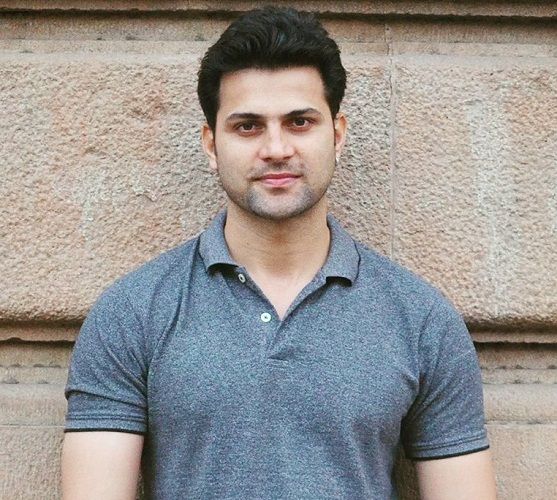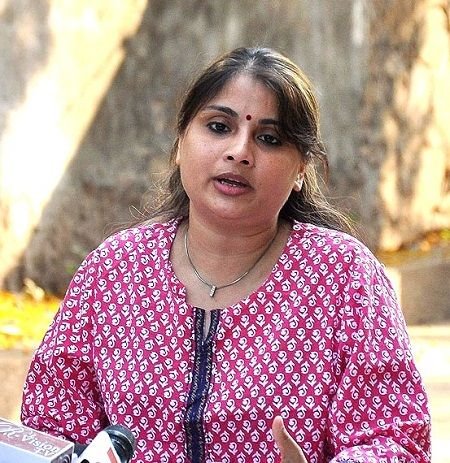The Doodle for Google competition is an annual event that allows young artists to showcase their talent and creativity on a global platform. Each year, the winning doodle is chosen based on its artistic merit, creativity, and relevance to the given theme. In 2021, Shlok Mukherjee emerged as the winner in the Indian edition of the competition with his captivating artwork titled “Celebrating India’s Scientific Advancement.” This blog post aims to analyze Shlok Mukherjee’s winning doodle and explore its significance in celebrating India’s scientific achievements.
Shlok Mukherjee’s doodle beautifully captures the essence of India’s scientific progress through a vibrant and visually appealing design. The artwork features iconic Indian symbols such as the lotus flower, peacock feather, and Ashoka Chakra, intricately intertwined with elements representing various branches of science. It showcases a harmonious blend of traditional Indian culture and modern scientific advancements.
The doodle serves as a visual representation of India’s rich scientific heritage and its ongoing contributions to global innovation. By incorporating symbols like the lotus flower, which symbolizes purity and enlightenment in Indian culture, Shlok Mukherjee highlights how science has been instrumental in advancing knowledge and fostering progress in society.
Furthermore, each element within the doodle represents a specific field of science. For instance, the peacock feather signifies biology and biodiversity, while gears symbolize engineering and technology. The inclusion of these diverse elements showcases the multidisciplinary nature of scientific advancement in India.
Shlok Mukherjee’s winning doodle not only celebrates India’s scientific achievements but also serves as a powerful tool for promoting scientific awareness among people of all ages. The artwork captivates viewers’ attention and sparks curiosity about various scientific disciplines. It encourages individuals to delve deeper into the world of science by exploring different branches and their contributions to society.
Moreover, this doodle serves as an inspiration for young aspiring scientists who may see themselves reflected in the artwork. It showcases that scientific progress is not limited to a specific group of individuals but is an inclusive and collaborative effort that anyone can be a part of.
Table of Contents
The Story Behind Shlok Mukherjee’s Doodle
Shlok Mukherjee’s winning doodle in the Doodle for Google competition is a testament to his creativity and passion for art. Born and raised in India, Shlok was deeply inspired by the country’s rich history of scientific advancements. His doodle beautifully captures the essence of India’s scientific achievements and celebrates the nation’s progress in various fields.
The inspiration behind Shlok’s winning doodle stems from his fascination with space exploration and astronomy. As a young boy, he would spend hours gazing at the night sky, dreaming of exploring distant galaxies. This passion for space led him to research about India’s contributions to the field of astrophysics and space technology.
Through his extensive research, Shlok discovered that India has made significant strides in space exploration. From launching satellites into orbit to successfully sending missions to the Moon and Mars, India has firmly established itself as a key player in the global space race. Shlok wanted to showcase these achievements through his doodle, highlighting the importance of science and technology in shaping India’s future.
The creative process behind Shlok’s winning doodle involved meticulous planning and attention to detail. He began by sketching numerous concepts on paper, experimenting with different ideas that could effectively represent India’s scientific advancement. After several iterations, he settled on a design that incorporated iconic elements such as rockets, satellites, and scientific instruments.
One striking feature of Shlok’s doodle is the depiction of renowned Indian scientists who have made significant contributions to their respective fields. Figures like Dr. APJ Abdul Kalam, Vikram Sarabhai, Homi J. Bhabha, and C.V. Raman are prominently featured in the artwork as symbols of inspiration for future generations of scientists.
The choice of colors in Shlok’s doodle also holds significance. Vibrant shades of blue represent the vastness of space while hints of green symbolize growth and innovation. The use of bold lines and intricate patterns adds depth and complexity to the artwork, reflecting the multifaceted nature of India’s scientific achievements.
Shlok’s doodle not only showcases India’s scientific advancements but also serves as a source of inspiration for young minds across the country. By depicting renowned scientists and highlighting their contributions, Shlok aims to encourage curiosity and ignite a passion for science among his peers. The doodle acts as a reminder that anyone can aspire to be a scientist and contribute to India’s scientific progress.
Representation of India’s Scientific Achievements in the Doodle
The winning doodle by Shlok Mukherjee beautifully represents India’s scientific achievements and showcases the country’s advancements in various fields. The elements and symbolism used in the doodle play a significant role in highlighting India’s contributions to science and technology.
One of the prominent elements in the doodle is the depiction of renowned Indian scientists and their groundbreaking discoveries. Icons like Sir C.V. Raman, Homi J. Bhabha, Srinivasa Ramanujan, and Jagadish Chandra Bose are portrayed alongside their respective inventions or theories. This inclusion not only pays homage to these remarkable individuals but also emphasizes India’s rich scientific legacy.
Sir C.V. Raman, for instance, is shown with a prism, representing his discovery of the Raman Effect. This phenomenon revolutionized the field of optics and earned him the Nobel Prize in Physics in 1930. By featuring Raman’s contribution, the doodle acknowledges India’s significant impact on scientific research at an international level.
Similarly, Homi J. Bhabha is depicted with a model of an atom, symbolizing his pioneering work in quantum theory and nuclear physics. Bhabha was instrumental in establishing India’s first atomic energy research center and played a crucial role in shaping India’s nuclear program. The inclusion of Bhabha highlights India’s advancements in nuclear science and its commitment to harnessing atomic energy for peaceful purposes.
Another noteworthy portrayal is that of Srinivasa Ramanujan, who is shown with mathematical equations surrounding him. Ramanujan was a self-taught mathematical genius who made substantial contributions to number theory, infinite series, and continued fractions. His extraordinary talent earned him recognition worldwide, placing India on the map as a hub for mathematical excellence.
Jagadish Chandra Bose, often referred to as the father of modern Indian science, is depicted with a plant and radio waves emanating from it. Bose’s research focused on plant physiology and the invention of wireless telegraphy, paving the way for modern communication systems. This representation not only highlights Bose’s scientific achievements but also underscores India’s contributions to the field of telecommunications.
Furthermore, the doodle incorporates symbols representing India’s advancements in space exploration and technology. The presence of a rocket and satellite signifies India’s impressive strides in the field of space science. With successful missions like Chandrayaan-1 and Mangalyaan, India has demonstrated its capabilities in launching satellites and exploring celestial bodies. The inclusion of these symbols serves as a reminder of India’s growing presence in space research and its aspirations to reach new frontiers.
Impact of the Doodle in Promoting Scientific Awareness
The winning doodle by Shlok Mukherjee has had a significant impact in promoting scientific awareness in India. By depicting India’s scientific achievements, the doodle has inspired young minds and sparked interest in science and technology.
One of the main ways in which the doodle has promoted scientific awareness is by showcasing India’s rich history of scientific advancements. The doodle features iconic Indian scientists and their contributions to various fields such as mathematics, physics, and medicine. This representation serves as a reminder of India’s long-standing tradition of scientific excellence and innovation.
Furthermore, the doodle serves as an educational tool that introduces young minds to different branches of science. Through its vibrant visuals and accompanying descriptions, the doodle provides a glimpse into the world of science and encourages children to explore these subjects further. It sparks curiosity and fosters a love for learning among students, inspiring them to pursue careers in scientific fields.
In addition to highlighting India’s past achievements, the doodle also emphasizes the importance of current scientific advancements. It showcases modern technologies like space exploration, renewable energy, and artificial intelligence, highlighting how these developments are shaping our world today. By doing so, the doodle not only celebrates past accomplishments but also encourages individuals to stay updated with current scientific progress.
Moreover, the popularity of Shlok Mukherjee’s winning doodle has allowed it to reach a wide audience across India. The Google Doodle platform attracts millions of users daily, ensuring that this representation of India’s scientific achievements reaches people from all walks of life. This widespread exposure helps create awareness about the importance of science in our society and encourages individuals to engage with scientific topics beyond their immediate interests.
The impact of Shlok Mukherjee’s winning doodle goes beyond just promoting scientific awareness; it also inspires young minds to dream big and pursue careers in STEM (Science, Technology, Engineering, Mathematics) fields. By showcasing Indian scientists who have made significant contributions to their respective fields, the doodle serves as role models for aspiring scientists and engineers. It shows that anyone, regardless of their background or circumstances, can make a difference through scientific pursuits.
Conclusion
The winning doodle by Shlok Mukherjee holds immense significance in celebrating India’s scientific advancement. It serves as a testament to the country’s rich scientific heritage and the potential of its young minds. Shlok’s doodle beautifully captures the essence of India’s scientific achievements and showcases them to a global audience.
Through his artwork, Shlok has managed to encapsulate various facets of India’s scientific advancements. The doodle features iconic symbols such as the Taj Mahal, which represents India’s architectural marvels, and the lotus flower, symbolizing purity and enlightenment. These elements not only showcase India’s cultural heritage but also highlight its contributions in diverse fields of science.
Furthermore, the doodle showcases key scientific achievements that have put India on the global map. It portrays satellites orbiting Earth, representing India’s prowess in space exploration and satellite technology. Additionally, it features a DNA double helix structure, symbolizing India’s significant contributions to genetics and biotechnology. By incorporating these symbols into his artwork, Shlok effectively highlights the country’s scientific advancements across various disciplines.
The impact of this doodle in promoting scientific awareness cannot be understated. It serves as an inspiration for young minds across India to pursue careers in science and technology. The recognition received by Shlok for his artistic representation of India’s scientific achievements helps create a sense of pride among aspiring scientists and encourages them to push boundaries further.
In conclusion, Shlok Mukherjee’s winning doodle is a powerful tribute to India’s scientific advancement. It beautifully represents the country’s achievements while inspiring future generations to contribute towards its continued growth in science and technology. Recognizing and encouraging young talent like Shlok plays a crucial role in fostering innovation and ensuring that India remains at the forefront of scientific progress on a global scale.




